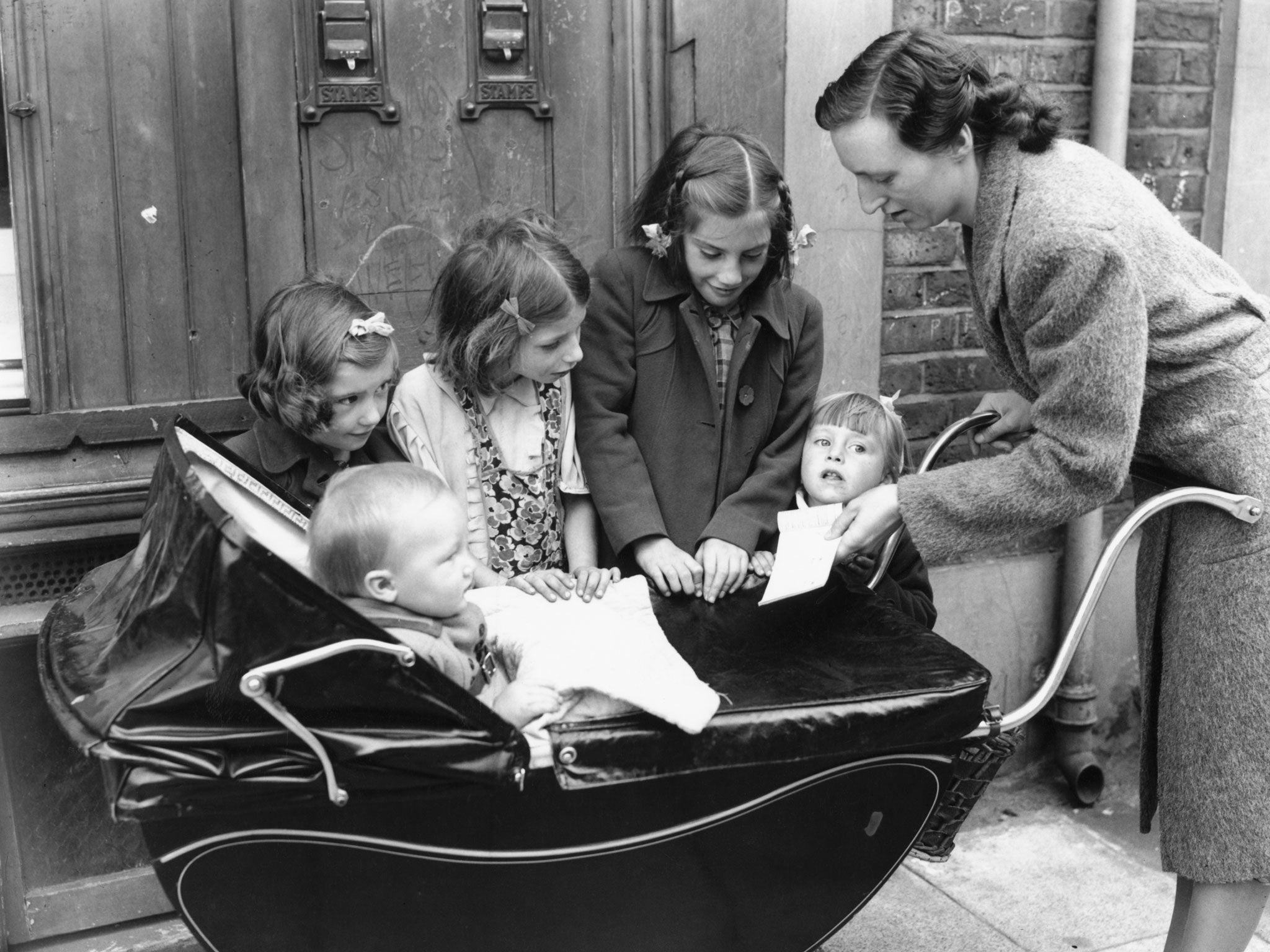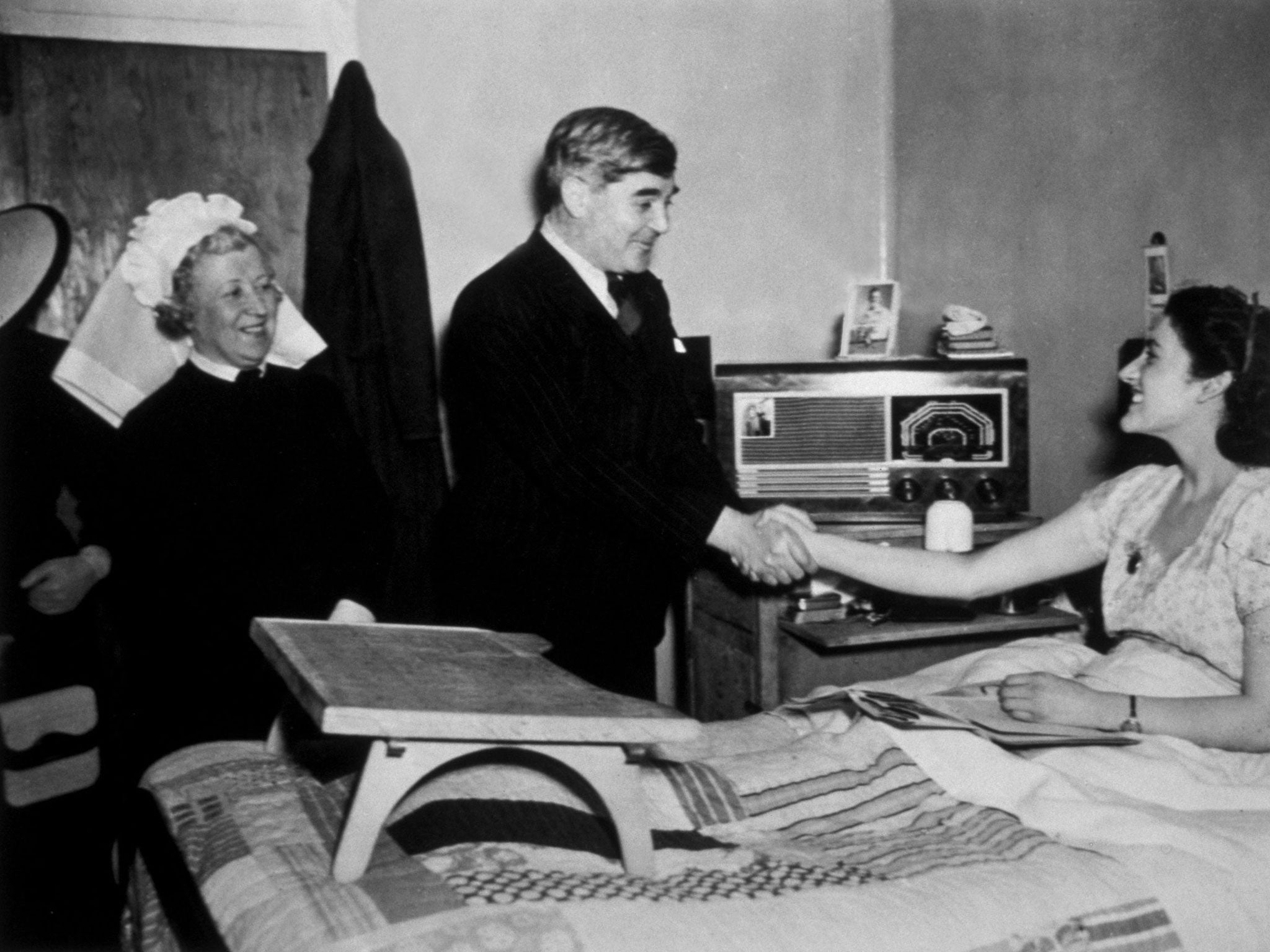The Life Project: Britain's birth-cohort studies are the envy of the scientific world - but will they survive in the 21st century?
From the dangers of smoking during pregnancy to the need for adult education, one extraordinary series of scientific studies, begun just after the Second World War, has informed cradle-to-grave health policy in this country. So why does almost no one know about them? And is the end around the corner?

Your support helps us to tell the story
From reproductive rights to climate change to Big Tech, The Independent is on the ground when the story is developing. Whether it's investigating the financials of Elon Musk's pro-Trump PAC or producing our latest documentary, 'The A Word', which shines a light on the American women fighting for reproductive rights, we know how important it is to parse out the facts from the messaging.
At such a critical moment in US history, we need reporters on the ground. Your donation allows us to keep sending journalists to speak to both sides of the story.
The Independent is trusted by Americans across the entire political spectrum. And unlike many other quality news outlets, we choose not to lock Americans out of our reporting and analysis with paywalls. We believe quality journalism should be available to everyone, paid for by those who can afford it.
Your support makes all the difference.It was a grey dawn on 13 August 2013 when a midwife in Watford General hospital told me that this was it. "Baby's heart rate is dropping, let's get this baby out fast," she said. "You've got to push." I'd been up all night, had fainted twice, wanted this hell over, and did what I was told.
Five minutes later, I felt a terrible stretching. My partner and the midwife were cheering. One more push and he was out. When they put my tiny son on my chest, I cried with relief that it was over. He was there and he was whole and he looked amazing.
This moment was also significant in another way. Not only was I incredibly grateful that my son had arrived healthily, safely and free of charge in an NHS hospital supported by modern medical care and with the pain – somewhat − soothed by powerful drugs, I had come to understand how extraordinarily fortunate I was to have this care, and why.
At that time, I was deep into researching a book about a remarkable series of scientific studies that have tracked generations of children growing up in Britain since the end of the war. The results fed into the foundation of the NHS, changed the way women give birth in Britain and established much of the advice given to expectant parents, as well as changing the way we are educated, parent our children and how we understand our employment, health, illness and death. These studies have touched the lives of almost everyone in Britain. Today, my son Edwin is an obstreperous two-and-a-half-year-old, and that book has changed the way I view myself, my family and my place in society.
The story of these extraordinary studies starts 70 years ago, when scientists decided to collect information on almost every baby born in one cold week in March 1946. It seemed crazily ambitious − but they pulled it off with post-war panache, by dispatching an army of health visitors to interview all mothers across the country. Were you able to get your full extra ration of a pint of milk a day, mothers were asked. Who looked after your husband while you were in bed with this baby? How much did you spend on vests, petticoats, bootees, bonnets, shawls and rubber sheets for baby? And how much did you spend on smocks, corsets, nightdresses, knickers and brassieres for yourself?
Scientists have been following several thousand of those children ever since, in what has become the longest-running major study of human development in the world. So successful was this effort to trace people through their lives – called a birth cohort study − that scientists also began to track groups of children born in 1958, 1970, the early 1990s and at the turn of the millennium. Altogether, these studies have enrolled more than 70,000 people across the five generations. They have become some of the best-studied people on the planet, and the amount of information collected on them is vast. Scientists have amassed mountains of questionnaires, terabytes of computer data, boxes stuffed with baby teeth, nail clippings, tufts of hair and umbilical cord slices. (They even collected 9,000 placentas, which are stored in buckets in a secure barn in Bristol.) The studies have produced more than 6,000 academic papers and fed into a slew of policies regarding pregnancy, birth, childcare, schooling, chronic disease, social mobility, adult education and much more. No other country in the world has a series of cradle-to-grave studies like this; they are considered a jewel in the crown of British science, the envy of researchers around the world, and have woven themselves quietly into our lives.
Yet, beyond the dedicated team of scientists who run them, few even know they exist.
I learnt that amazing things happen when you do something as simple as watching people live their lives. First, I came to realise how much mine and my children's lives had already been silently shaped by these studies. In the 1940s, results from the project shocked the nation by exposing the dismal conditions in which working-class women were giving birth – many more lower-class babies died than did those of the well-off. These results appeared just in time to shape maternity services in the fledgling NHS; when it started in 1948, the medical care associated with pregnancy and birth became free and more generous maternity allowances were introduced, laying the groundwork for the maternity care and benefits we receive today. The study also revealed how few women received pain relief at birth, and helped establish the right of women to receive it from that point on.

It may sound obvious now that we shouldn't smoke during pregnancy, but that wasn't widely accepted until a 1972 paper from one of the cohort studies showed definitively that smoking during pregnancy was linked to reduced birth weight and a higher risk of infant mortality.
When I avoided alcohol, ate fish during pregnancy, breastfed my children and put them to sleep on their backs to reduce the risk of sudden infant death syndrome, all of it was partly because results from the cohort studies have contributed to much of today's essential prenatal and postnatal advice.
Cohort studies also changed my approach to my kids. They have shown that relatively simple acts of parenting – reading to children every day, teaching them the alphabet and numbers, talking to them about what they are learning in school, expressing ambitions for their future − are all associated with improved academic achievement and other good outcomes in life. From all this, I came to think that what I was doing at home with my three boys was probably more important than moving into the catchment area for the perfect school. (On a practical level, we introduced "talking time" in the evening, when we would attempt to have a somewhat meaningful conversation with the children about their day.)
Of course, most of these things are just parenting common sense − but when you're battling with your children to put down the iPad and pick up a book, it really helps to have the scientific literature on your side. And importantly, I learnt that there are no guarantees of success: not every child who is read to will shine at school. And it's not like I have all the answers: there are plenty of evenings when I'm to be found screaming with frustration at the children, or wondering how my son's spelling can be that bad. But with the cohort studies behind me, at least I feel more confident that I'm trying to do the right thing.
It was hard to escape the horrible irony that I was learning from my book how important it was to spend time with my children, just as writing the book robbed me of any time to spend. But the cohorts helped me here, too, because they showed that I was far from alone. Just under half of women born in the first cohort study, in 1946, were working when they were 26, a number that had risen to more than three- quarters of women from the 1970 cohort, which is my generation. (I was born in 1973). But the cohort scientists have investigated whether children of working mothers suffer any adverse consequences – and generally find that they don't. I find this a source of immense relief.

Again and again, I found myself drawn to the cohort that most closely reflected my own life. The studies showed that this generation is having children later. (I had my last at 40.) In one recent survey it showed that more than half of them are often worried, 40 per cent are tired most of the time, and many drink more often than they should. I confess to all of these things. They also showed that nearly half of women are overweight or obese – far more than the previous generation. In this case, thankfully, I am not one. So the studies became an illuminating frame of reference in which to view my life – to understand how I fit into my generation and to sometimes find reassurance when I do not.
By the time I neared the end of writing my book, I had become convinced that birth cohort studies cast a potent spell. They hold the same fascination as watching your own children grow up: you just want to know how they'll turn out.
It is only because of the scientists' belief, commitment, stubbornness, charm and eccentricities that the studies have got this far. (One scientist threw one of the biggest birthday parties in the world for the cohort members at Alton Towers, and recruited Mrs Thatcher, Cliff Richard, Twiggy and 600 more of the country's great and good to a charity to help keep the studies funded.)
But my story came with an unexpected twist, because a recent effort to track a new generation recently failed. Last year, scientists launched the biggest, most ambitious study in the series, with the aim of recording the lives of 80,000 children born into the modern world. They wanted to explore a ream of pressing questions, such as the lifelong impacts on these children of exposure to pollution, rising income inequality, and whether children born by Caesarean section end up more at risk of allergies, as some now think.
But just a few months after it started, the government funding bodies announced that it would close. One problem was that women weren't signing up: today's busy women are a lot less willing to take part than those just after the war. The other is that these studies are now extremely complicated, expensive and bureaucratic to run. Scientists estimate – staggeringly − that a third of all babies born today will live to 100. It's difficult for politicians and science funders to agree to pay for a long-lasting, expensive study when it probably won't come to full fruition until they're dead. This opportunity to track my son's generation, and to compare it with previous ones, has been lost.
Back in August 2013, with my two-day-old baby asleep in the kitchen and my eyes slits from lack of sleep, the doorbell rang. It was a health visitor, there to find out how baby and I were doing. It struck me as a wonderful circle − just as all those mothers saw health visitors at the start of that very first survey, in 1946, I was, too. (Needless to say, the questions are different now. How was breastfeeding going? Was baby sleeping on his back? Was I doing my pelvic floor exercises?)
When she had gone, there was a spell of August quiet that comes when everyone is away on holiday. Once baby was asleep, I went back to writing my book. If I'd been asked by scientists if they could watch him grow up, I wouldn't have hesitated to say yes. Let's hope someone finds the cash and the determination to sign up a new generation of children to join the most extraordinary club in the world.
Helen Pearson is a journalist and editor for the science journal 'Nature' and the author of 'The Life Project: The Extraordinary Story of our Ordinary Lives' (£20, Allen Lane), out now
How the cohort studies have shaped our lives
At school
In the 1960s, one cohort influentially revealed that bright, working-class children were less likely to pass the 11+ and enter grammar school than well-off ones, which helped sweep in comprehensive education.
As adults
Cohort studies revealed the surprising proportion of adults in Britain who struggled with reading and maths, inspiring a major adult-education programme in the early 2000s. One study showed that adult education was linked to better cognitive ability in later life.
As we age
Cohort studies are helping understand the ageing population. Middle-aged adults who struggled to grip strongly, stand up from a chair and balance on one leg had a higher mortality rate over the subsequent 13 years than those who could manage all three tests.
Join our commenting forum
Join thought-provoking conversations, follow other Independent readers and see their replies
Comments